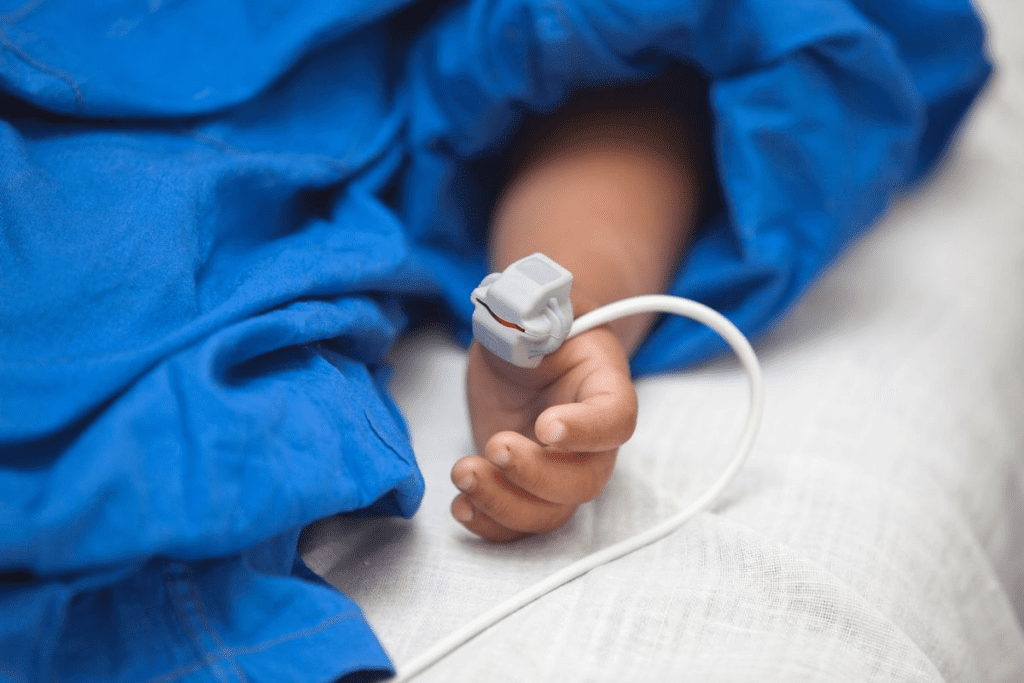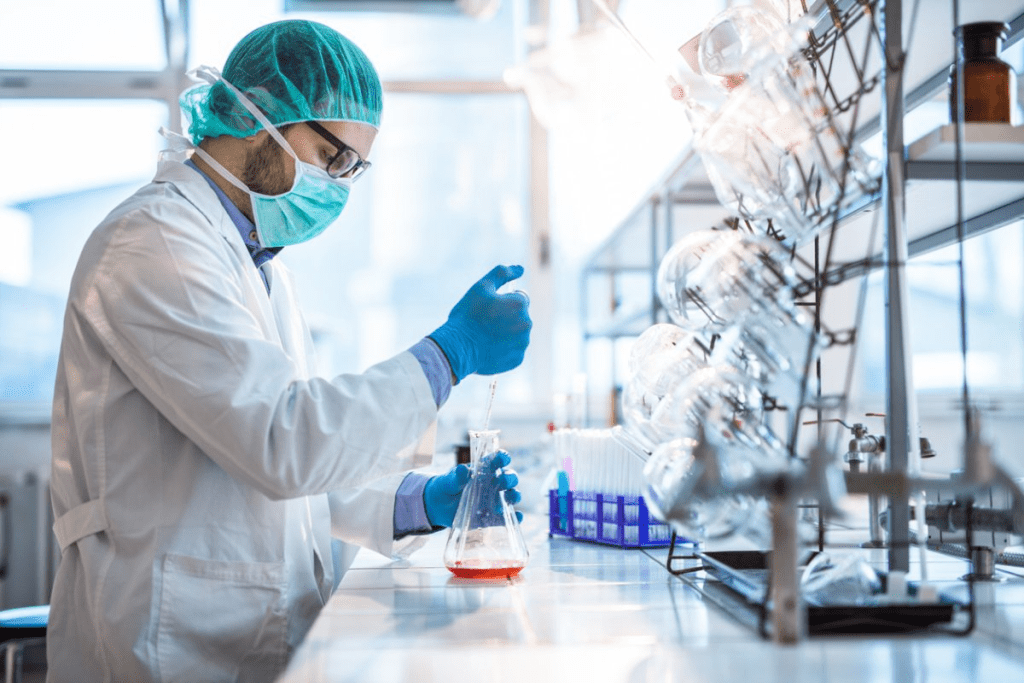Last Updated on November 14, 2025 by
Using anesthesia on children is key to keeping them safe during surgery. But it’s important to know that is anesthesia safe risks exist, mainly in young kids whose bodies are growing.

Children under 3 are at higher risk because their brains and bodies are not fully developed. Recent studies show how vital it is to understand these risks to make better choices.
Knowing the possible problems with anesthesia risks helps parents and doctors. They can then work together to reduce these risks and get the best results for young patients.
It’s key for parents and doctors to know about anesthesia risks in kids. The safety of anesthesia in young patients depends on their age, health, and the type.
The American Society of Anesthesiologists says, “Anesthesia safety for kids has gotten much better. This is thanks to new tech, training, and care methods.” This shows how important it is to understand how kids react to anesthesia.
Children’s growing bodies change how they react to anesthesia. Their small airways and fast metabolism can make breathing harder under anesthesia. A study in Pediatric Anesthesia notes, “Kids’ airways and body functions are different, making anesthesia tricky for doctors.”

Recent studies show that complications from pediatric anesthesia are rare. A big study found that serious problems happen in less than 1% of cases. “Anesthesia risks are low, but they’re not zero,” a top anesthesiologist points out. The data show that with the right care, these risks can be kept low.
Important facts about pediatric anesthesia safety include:
Knowing these details helps parents and doctors make better choices about anesthesia for kids.
Pediatric anesthesia comes with risks, with respiratory complications being the top concern. These issues can be mild or severe. Anesthesiologists must be vigilant about these risks.
Respiratory problems in kids during anesthesia can take many forms. These include laryngospasm, bronchospasm, and oxygen desaturation. Knowing about these risks is key to managing them well.
Laryngospasm and bronchospasm are serious issues in kids under anesthesia. Laryngospasm is when the vocal cords suddenly close, blocking the airway. Bronchospasm is when the airways narrow, making it hard to breathe. Both need quick action to avoid serious problems.
Oxygen desaturation is a critical issue in pediatric anesthesia. It’s when oxygen levels drop, leading to hypoxia if not treated quickly. Managing airways in kids is tough because their airways are small and flexible.
Children under 3 are more at risk for respiratory problems during anesthesia. Their airways are smaller and more prone to blockage. They also need more oxygen because of their high metabolism.
The airways of young children are different from those of adults. This makes anesthesia management in them unique. It’s important to understand these differences to ensure safe care.
It’s vital to know the heart risks linked to anesthesia in kids. Anesthesia can cause heart problems in children. So, doctors need to watch out for these risks to keep kids safe.
One big risk is unstable blood pressure and heart rate in kids under anesthesia. Kids’ bodies react differently to anesthesia, and their hearts are more affected. This can lead to low or high blood pressure and heart rate changes.
These changes need quick action to avoid more problems. The main reasons for these issues are:
Careful monitoring and adjustment of anesthesia are key to reducing these risks.

Infants face special heart risks during anesthesia because their hearts are not fully developed. Their hearts are more sensitive to anesthetics and can’t handle the effects as well as older kids or adults.
Some specific risks for infants include:
Anesthesiologists must be aware of these vulnerabilities to tailor their management strategies. This ensures safe anesthesia for this high-risk group.
Children who have surgery face risks that don’t stop after the operation. Complications can affect their recovery and health.
Several factors increase the risk of complications in kids after surgery. It’s important for doctors to know these risks to help manage them.
Nausea and vomiting, or PONV, are common in kids after surgery. PONV can cause dehydration, imbalance of electrolytes, and longer hospital stays. It’s a big worry for kids’ health.
The chance of PONV in kids depends on their age, the surgery type, and the anesthesia used. Doctors use antiemetic drugs and manage fluids carefully to help.
Emergence delirium is a complication that can happen after anesthesia. It shows as agitation, confusion, and disorientation. It’s hard for kids and their families.
Younger kids, certain surgeries, and some anesthetics increase the risk of emergence delirium. Doctors handle it with gentle care, less stimulation, and sometimes medicine.
Managing pain in kids is hard because they can’t tell us how much they hurt. It’s key for their comfort and to avoid the bad effects.
To help kids with pain, doctors use medicine and other methods. They choose what works best based on the child’s age and development.
Anesthesia in children worries parents and doctors. As more kids need surgery, knowing the risks is key. It’s important to understand how anesthesia might affect their brains.
Studies look into how anesthesia impacts young brains. They focus on the effects of using it many times. Animal studies show changes in brain structure and function after repeated use. But it’s hard to apply these findings to humans.
Many studies have looked at the effects of repeated anesthesia on young brains. Animal studies suggest that repeated use can harm brain cells and lead to long-term learning problems. But human studies are not as clear. Some say repeated use might harm brain development, while others find no harm.
Single, short uses of anesthesia are usually safe for kids. Most children who have one surgery with anesthesia don’t face long-term problems. But every child reacts differently, and some might be at higher risk due to health or genetics.
Deciding on anesthesia for a child is complex. Doctors and parents weigh the need for surgery against the risks of anesthesia. For many, the benefits of surgery are worth the risk of anesthesia.
In summary, while concerns about anesthesia’s long-term effects are valid, most single-use uses are safe. Ongoing research will help us better understand and manage these risks. This will guide how we care for children and make decisions about their health.
It’s important for parents and caregivers to know about the risks of pediatric anesthesia. Anesthesia is usually safe, but there are risks, mainly for kids under 3. These risks can affect a child’s health.
The main dangers include breathing problems, heart risks, and issues after surgery such as nausea. There’s also worry about how anesthesia might affect a growing brain.
To lower these risks, it’s key to talk about the benefits and dangers of anesthesia with a doctor. Knowing the risks helps parents make better choices for their child. It’s also important to have anesthesia given by skilled professionals in a safe place.
Being informed about anesthesia safety and risks helps parents make the best choices for their child. This ensures their child gets the best care possible.
General anesthesia is usually safe for kids when given by experts. But there are risks. Parents should know these to make good choices.
The biggest risks are breathing problems. These include issues like laryngospasm and oxygen problems, more in kids under 3.
Studies are looking into how anesthesia affects growing brains. But a single short use is mostly safe. More uses might be risky.
Parents can lower risks by keeping their child healthy before surgery. Follow all pre-anesthesia steps. Talk to the anesthesiologist about worries.
Serious problems from anesthesia are rare in kids. But knowing the risks is important. Talk to your child’s doctor about them.
Yes, heart and blood pressure issues are risks, especially in babies. Experienced anesthesiologists closely watch and manage these risks.
To deal with nausea and vomiting after surgery, doctors use special medicines. They work to keep kids comfortable while they recover.
Some kids might act differently after anesthesia. These changes are usually short-lived. But it’s good to talk to your child’s doctor about it.
Subscribe to our e-newsletter to stay informed about the latest innovations in the world of health and exclusive offers!